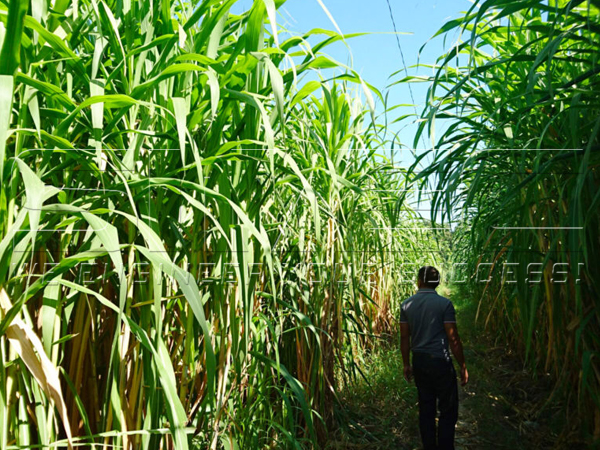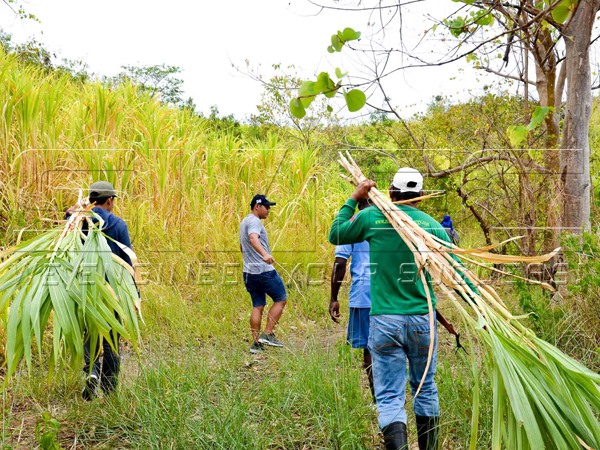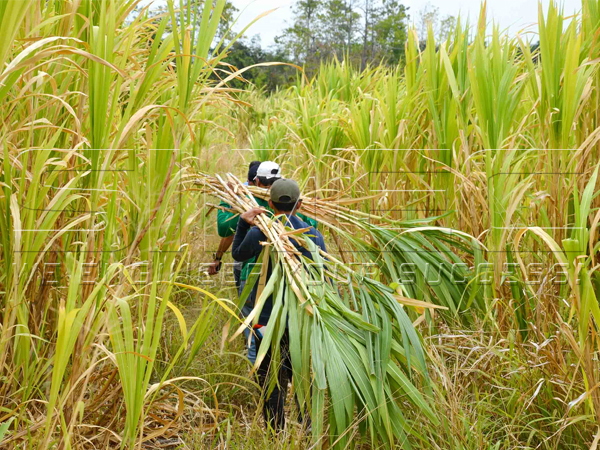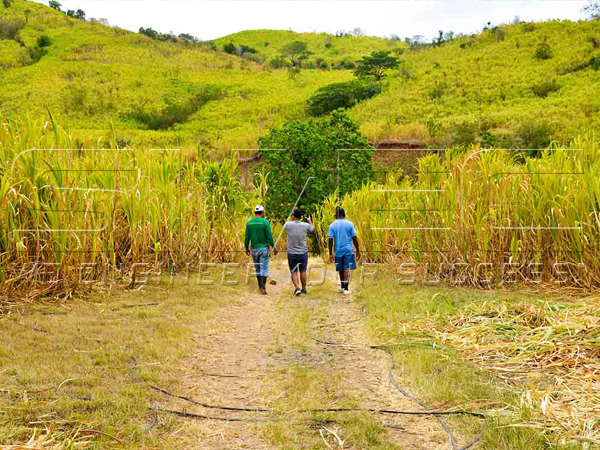Discourse of Fast-Growing Bana Grass
Chapter I. Growing and Harvesting
1. Basic Introduction and Application of Bana Grass

Bana Grass

Bana Grass Harvest
Bana grass is also known as the miracle grass, a hybrid variety with scientific name, Pennisetum Purpureum (Babala) X Pennisetum Americanum (napier grass). Its name Bana is derived from the acronym ‘ba’ in Babala and ‘na’ from Napier.
Its amazing growth power makes it suitable for many purposes, from tall grass hedge to fuel and fodder.
Bana grass can grow tall and dense within months in harsh, poor, dry environments and is easily propagated. Once its roots have sprouted, it doesn’t fear dry spells, that’s why bana grass is great for growing in places that are hard to irrigate. Production area can be maximize by planting bana grass in hard-to-till places or slopes. But bana grass won’t survive from cold temperature, this plant fares better in mild-to-tropical climates.

Philippines Bana Grass

Bana Grass Plantation
Height of bana grass can be up to 4~7 meters, and because it grows densy, a line of bana grass will act as a impenetrable hedge to protect weaker plants.
Bana grass grows extremely rapidly in proper conditions. It also fares better than most other grasses even in a poor growing environment. It takes about 4 months for bana grass to reach about 2 meters, after harvesting and drying, it can be stored for a long time as fodder for cows, horses, sheep and goats. Fresh bana grass can be fed as feed within growing for 45 days, the grass is high in protein content, about 16~18 CP at this age.
The average yield per hectare per year of the bana grass is at 300 metric tons wet, it will produce large amounts of organic matter from poor soil, to use as compost in more valuable land.
Dried bana grass is also a prime energy crop from which power, heat and coal may be derived. For this kind of application, six months old harvesting is preferred to be able for the grass to develop its lignin content so the energy content is much higher.
2. Bana Grass Botanical Description and Genetic Variation
1). Reproductive Biology
2). Physiology and Phenology
3). Morphology
3. Bana Grass Cultivation Techniques
4. Harvesting of Bana Grass (caring and pruning)
5. Methods of Bana Grass Harvesting:
6. Methods of Drying of the Bana Grass:
7. Intercropping Bana Grass
8. Nutritional Attributes of Bana Grass
1. Silage
2. Hay and Dry Grass Utilized as Biomass Fuel
(Bana Grass Laboratory Analysis Report)
3. Fresh Grass
4. Pasture
5. Weed and Soil Erosion Control
6. Climate and Soil Adaptation (Ecology)
7. Establishment and Yields
SAMPLE PREPARATION
LABORATORY ANALYSIS REPORT
For more information about the bana grass, please download the full report:
Discourse of Fast-Growing Bana Grass
Open password is available for SIMEC customers.
If you don't have the read permission, please contact info@simecpellet.com.